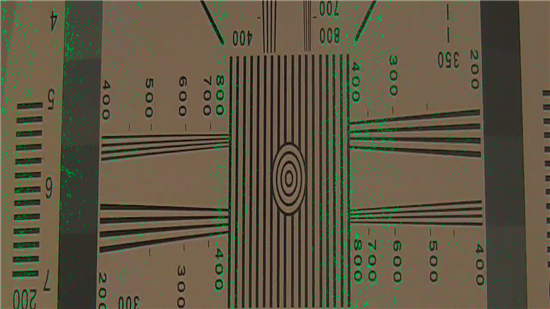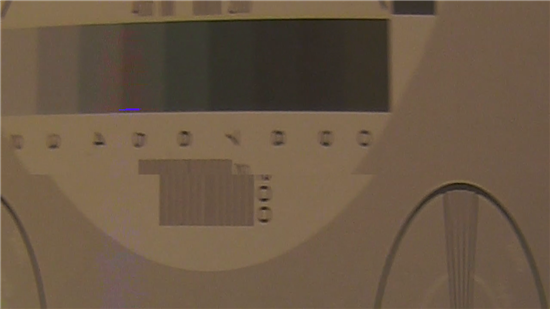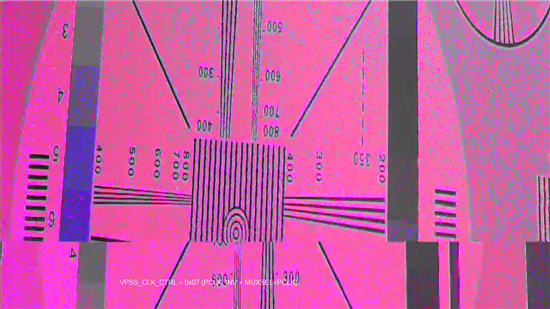Despite the captured video being correct most of the time (Y/C correct, colours correct, streaming OK) we are getting a couple of glitches which seem to come & go.
Capture is BT1120 YUV input, 720p60 or 1080p30, Appro IPNC MT5 DM368 SDK 4.0.x
Firs issue is occasional bright green or blue/pink highlights, but not necessarily when the picture is actually bright:
2nd issue is "tearing" of the bottom part of the screen, it seems like the capture/stream sometimes repeats the previous frame(s) or stutters, and does not keep up with movement, causing out-of-sync image (always in the bottom half of the picture) - here you can see the test card has been moved, and the bottom part has not kept up. There is also a small blue/purple artefact visible as mentioned above:
It feels like we're so close to it working 100% correctly, but obviously some small setting is wrong somewhere!





